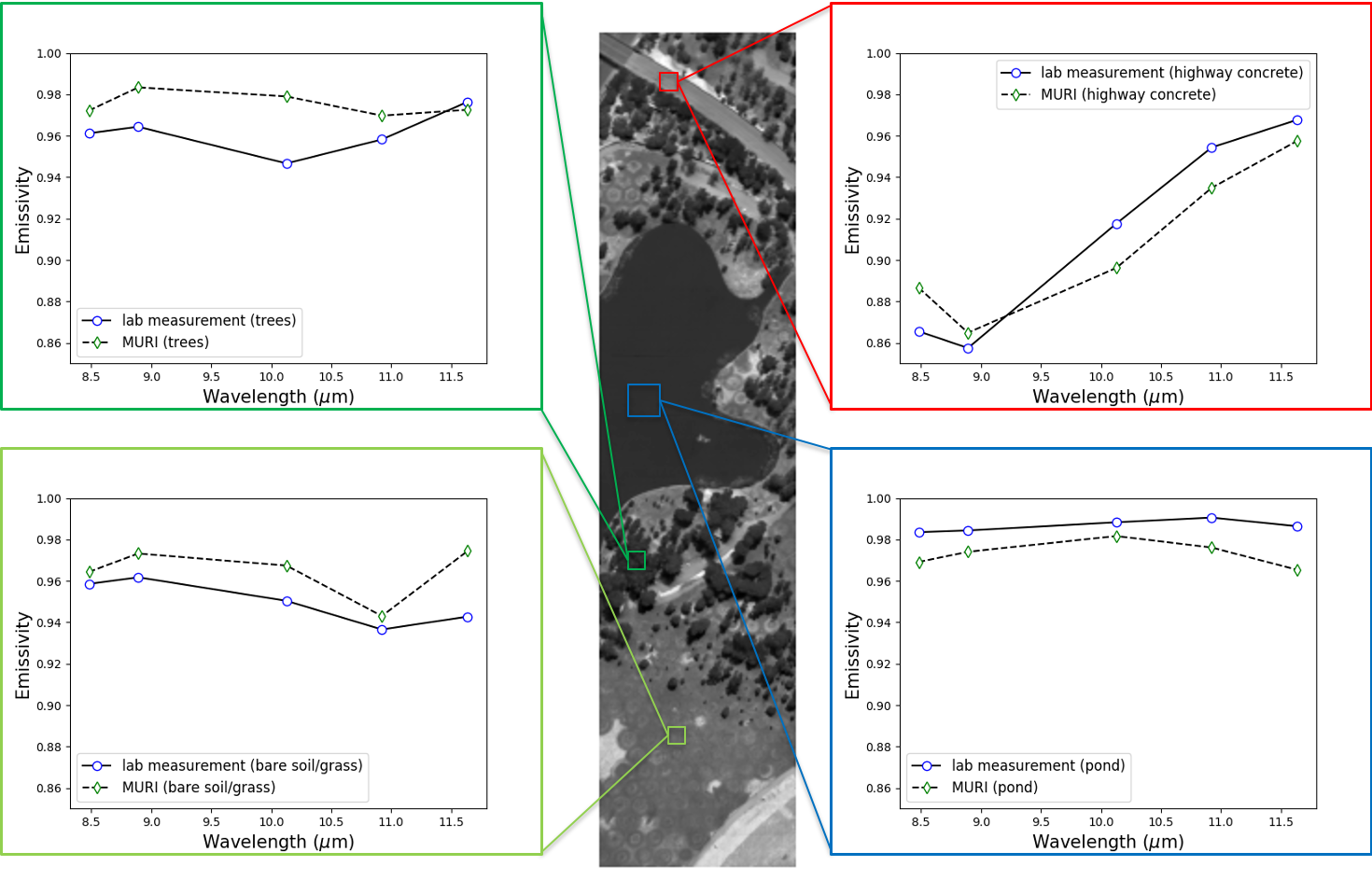Simulation and Modeling to Support Sensor Development and Assessment of the Leonardo DRS Multispectral Thermal Sensor
Principal Investigator(s)
Aaron Gerace
Research Team Members
Eon Rehman, Nina Raqueno, Tania Kleynhans
Project Description
Under funding from NASA’s Earth Science Technology Office (ESTO), Leonardo DRS developed and flight-tested a six-band thermal sensor to demonstrate its potential utility as a low-cost space-bourne instrument for future Landsat missions. RIT conducted several modeling efforts to drive the radiometric design of the sensor and conducted a ground campaign to provide reference measurements to support test flights conducted in 2019 over the Los Angeles area.
Two campaigns were conducted in 2019 to demonstrate the fidelity of the MURI six-band thermal instrument developed by Leonardo DRS. As shown in Figure 1, MURI image data show good agreement with (forward-modeled) reference measurements obtained over water targets. Note that the mean temperature difference between observed and reference for these data is 0.18 [C] with a standard deviation of 0.57 [C] which is comparable to the fidelity of Landsat’s Thermal InfraRed Sensor (TIRS). Figure 2 shows image data collected with the six-band MURI instrument over El-Derado Park in Los Angeles, California. A five-band temperature/emissivity separation was performed over four materials to assess MURI’s potential to be used to derive emissivity. The retrieved emissivities are in good agreement with data obtained from an emissivity library for the corresponding materials.
A third campaign is scheduled for October 2020. Leonardo DRS will lead the airborne campaign with their improved MURI instrument that contains arrays with higher sensitivity. RIT will again lead a ground campaign to acquire reference temperature and emissivity measurements. An assessment of MURI-observed vs. reference measurements will be conducted to determine the potential improvements of the new instrument on image fidelity.
Figures and Images

Comparison of MURI-measured vs. (forward-modeled) reference radiance measurements acquired during a 2019 campaign over the Los Angeles, California area. Note that the mean temperature difference between observed and reference for these data is 0.18 [C] with a standard deviation of 0.57 [C] which is comparable to the fidelity of Landsat’s TIRS sensor.
